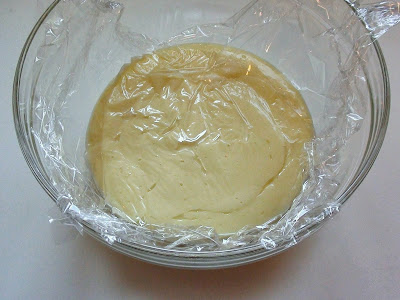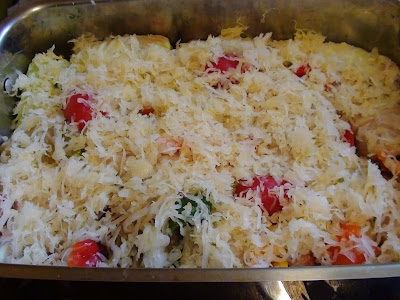
Great aunt Lizi’s impact on my life pretty much ran the spectrum. She was responsible for our meeting with Jim back in 1967 and then years later she thought me how to make cabbage rolls and beigli. The rest of her influence was less beneficial to my well being and may God forgive her for the misery she caused the family on both sides of the world. I have to admit she was an excellent cook and once I watched her make cabbage rolls. Today [thirty odd years later] I finally measured it out and wrote it down.
Authentic Hungarian cabbage rolls are made with Hungarian paprika and sauerkraut. Sometimes I wish fusion recipes would not make claims of authenticity. Because cooking the rolls in tomato sauce or in tomato juice, adding much too much rice or using ground beef in any proportion is not the Hungarian way.
You may cook Hungarian cabbage rolls in a large pot and watch them devotedly or put them in the oven and let them develop on their own. I use a deep roasting pan. Some type of smoked pork piece is always beneficial. This time I bought a nice strip of smoked ribs. When all else fails, a chopped up ham steak will work too. Hungarian recipes generally call for entire heads of sour cabbage, in which case the cabbage has to be rinsed otherwise the dish will be unpleasantly sour. But if we combine fresh cabbage with wine sauerkraut, the cabbage rolls will always have the right amount of pungency. Add salt only to the filling because the sauerkraut and the smoked pork adds plenty of salt to the dish.
Assemble and cook the cabbage rolls on day one. Let them cool and keep them chilled overnight. The following day make the paprika
roux, stir it into the dish and let it cook in the oven for a couple of hours longer. After that the cabbage rolls are ready for serving. Eat it with a thick slice of rustic bread and sour cream. No you may not butter the bread.
CABBAGE ROLLS
1 head of cabbage
1/4 cup Basmati rice
3 Tbsp oil
1 onion diced
2-1/2 lb lean ground pork
3 cloves of garlic, diced
1 lb chopped smoked ribs or diced ham
1/2 tsp marjoram
1/2 tsp caraway seeds
salt and ground pepper to taste
1-2 Tbsp Hungarian paprika
2 eggs
8 cups sauerkraut
2 peppers, chopped
3-4 fresh medium tomatoes, skin removed and chopped
4 Tbsp oil
4 Tbsp flour
3 Tbsp Hungarian paprika
1 tsp hot Hungarian paprika
14 % sour cream
• Put a large pot of water on the stove and bring it to boil.
• Remove the leaves from the cabbage until the leaves are too small for rolling up. The instruction for removing the leaves is found
HERE.
• Add the cabbage leaves to the pot and bring to a simmer.
• Set the remaining cabbage aside for use later.
• Meanwhile place the rice and 1 cup of water in a small pot and bring it to boil.
• Cook the rice until half done.
• Pour off the water and set the rice aside for use later.
• When the cabbage leaves are soft enough to roll, remove from the stock and set them aside to cool.
• Do not discard the cabbage stock, you will need it later.
• Next dice a large onion and place it in a non stick fry pan with 3 Tbsp oil.
• Gently sauté the onions until they are very soft.
• Place the ground pork in a large bowl.
• Add the half cooked rice.
• Add the soft onions and the diced garlic.
• Add the marjoram, caraway seeds, salt and pepper and 1 Tbsp Hungarian paprika.
• Add the 2 eggs.
• With clean hands combine the meat with the onions, spices and the eggs until filling is the same throughout.
• Next slice the remaining head of cabbage you set aside into strips and set them aside.
• Before rolling, cut away a little bit from the thick stems off the cooked leaves with the small knife for easier rolling.
• Take a cabbage leaf and place a small handful of stuffing inside and wrap it up like a burrito.
• Place the cabbage roll on a tray temporarily.
• Repeat until all the stuffing is wrapped inside the cabbage leaves.
• Now you can begin the layering.
• Scatter 4 cups of sauerkraut in the pan.
• Add the fresh cabbage strips you made earlier and mix it into the sauerkraut.
• Place the smoked ribs or the diced ham on top of the sauerkraut.
• Arrange the cabbage rolls on the top.
• Add the pepper chunks and the tomatoes.
• Scatter another 4 cups of sauerkraut over everything.
• Add enough cabbage stock to cover the last layer of cabbage roll. Discard the rest.
• Place the pan in a 350F oven, cover with foil and cook for 4 hours.
• Remove from the oven and let it cool.
• With a slotted spoon transfer the cabbage rolls and the ribs into a smaller pot and cover.
• Pour the cabbage with the broth into a separate bowl and cover.
• Place everything in the fridge for the night.
• The following day make a
roux in a nonstick skillet from 4 Tbsp of oil and 4 Tbsp of flour.
• Remove from the heat and stir in 3 Tbsp of sweet and 1 tsp of hot Hungarian paprika.
• Stir the paprika roux into the bowl with the cabbage.
• Taste and adjust the salt.
• Transfer half of the thickened cabbage back into the pan the cabbage rolls were cooked in.
• Lay the ribs and the cabbage rolls on the top.
• Cover with the remaining cabbage and the remaining broth.
• Place in preheated 350F oven for 2 hours.
• Serve the cabbage rolls with sour cream and rustic white bread.
The half cooked rice
Filling ingredients
The filling is ready
Lay a bit of filling inside the cabbage leaf
Fold up the cabbage leaf around the filling like a burrito
Distribute the smoked ribs
Add the cabbage rolls
Top with fresh pepper chunks and tomatoes
Cover everyting with sauerkraut
Make the roux
Add the layers again
Bake for 2 hours longer and cabbage rolls are ready


















































